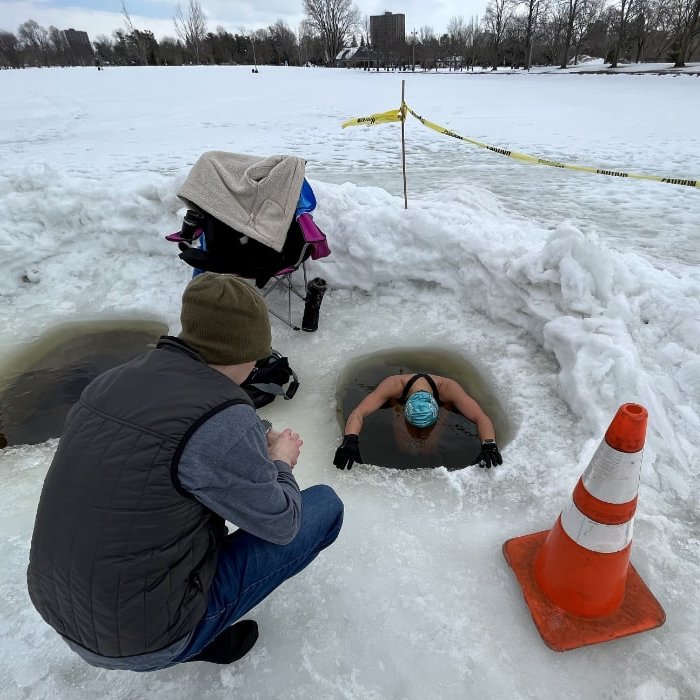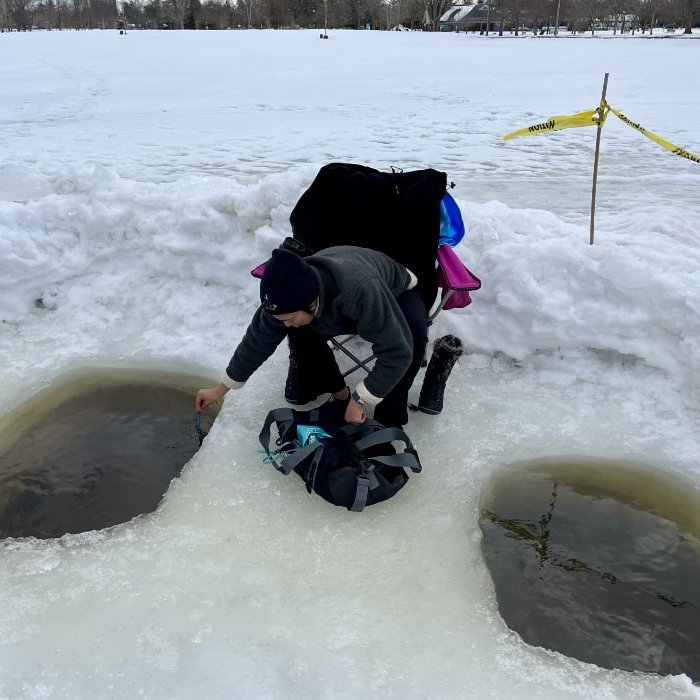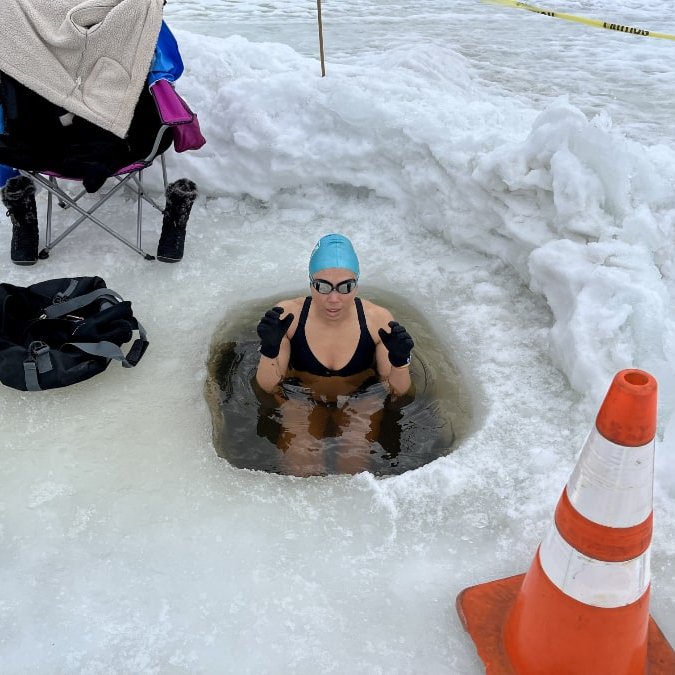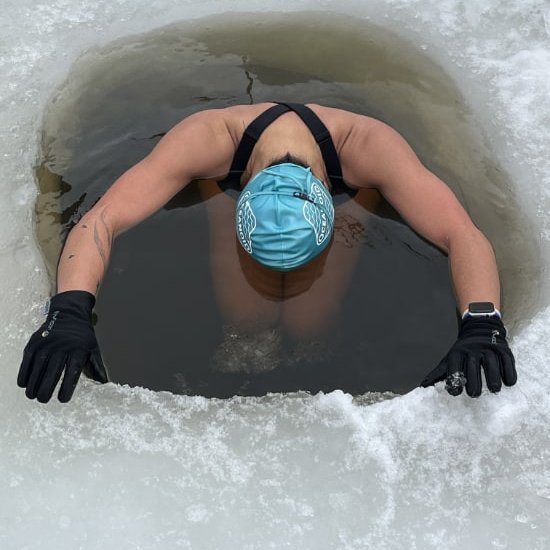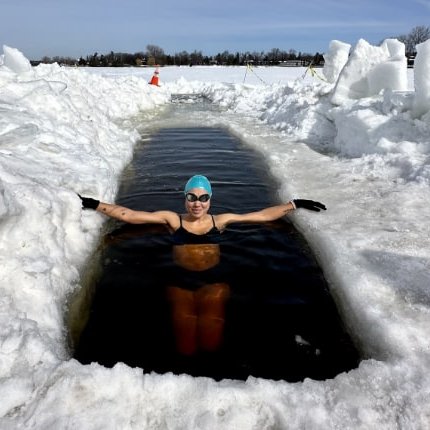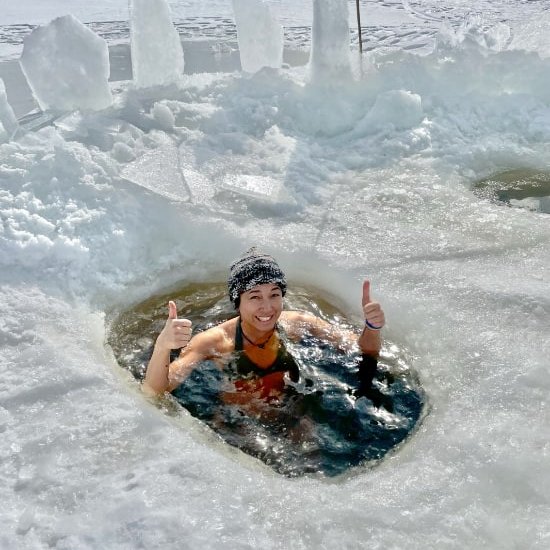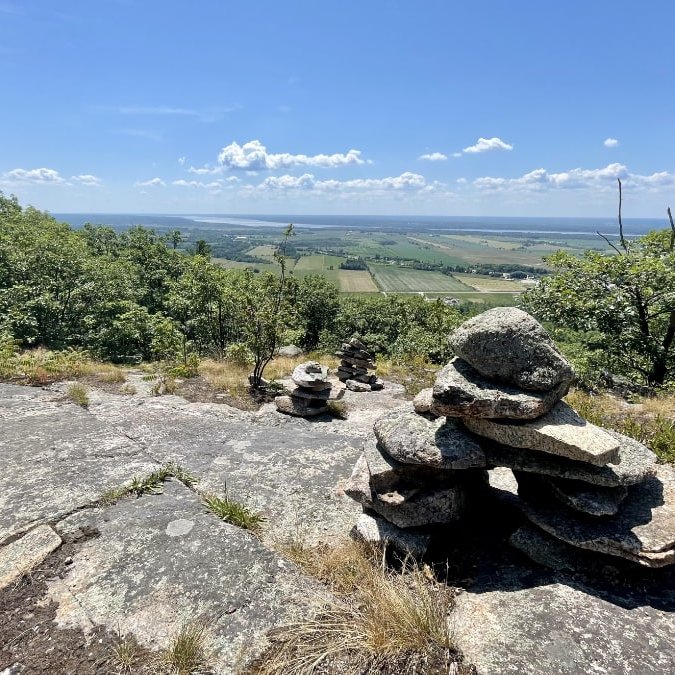If you've been following me over the past few weeks, you've seen that I've been challenging myself my cold water training in new ways in the open ice of Britannia Bay in Ottawa. Last week, I tried the open ice swimming lane, which proved more challenging that I had expected. Yesterday, I decided to try leave out the movement and try doing a static breath hold as a new challenge.
Considering the Shore Conditions
The weather yesterday was similarly warm as compared to other days I had gone, with a shore temperature of around 1-2C, but there was a much stronger wind, making it feel closer to -5C according to weather reports. Also there were more clouds blowing in, preventing us from having consistent sun at the site. With this in mind, as well as the water temperatures still being around -2C, I decided I focus on stillness, and not push my time in the water much beyond what I had already done.
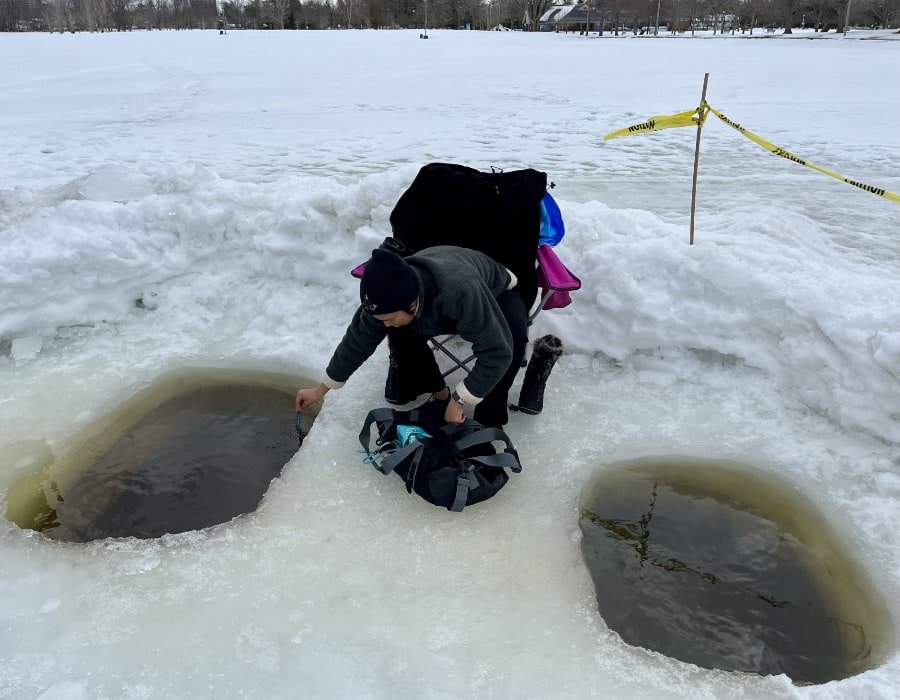
Feeling the Cold
I approached my cold water immersion similarly to the last two, but chose to wear my swim cap and goggles. I didn't bother with ear plugs since wasn't swimming, though I probably would have been more comfortable if I had. Just as I got in the water, the clouds blocked the sun and the wind started to whip across the surface of the ice uncomfortably. There are some mounds of ice and snow that serve as a wind break, but not enough. As I felt the wind on my face and head, I wished I had thrown a hat over my cap for a little added warmth while I was just sitting there in the water.
Prepping for the Breath Hold
I had originally entertained an outside in time of 8 minutes, but as I sat there approaching the sixth minute, feeling the cold a little more deeply, I decided to shave it down. At the 6-minute mark, I told Chris, I was going to stick to 7 minutes, and was going to start prepping to do my breath hold. I hadn't spent as much time doing my usual relaxation breathing techniques as usual, having focused more on how my body was reacting to the cold. Concerns about feeling the cold was getting in my head. I definitely wasn't as relaxed as the first time, and I didn't have swimming as a distraction as I did the second time. Was that uncomfortable feeling in my skin my body starting to shiver? My mentor Roberta always told me that if I started to shiver while in the water, it was a sign that I should get out. I was pretty sure it wasn't, but I found myself questioning my judgment. With all this happening in my brain when I took my last breath, I didn't take in quite as much air as usual, likely borne out of a subconscious desire to get out of the water.
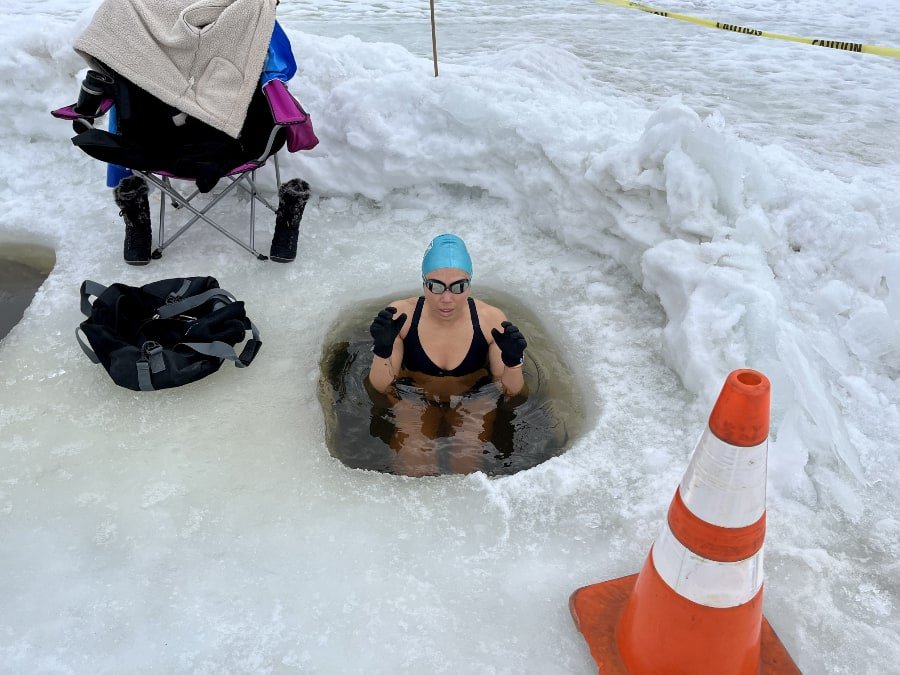
Holding My Breath in the Icy Cold Immersion
I put my face into the water with my lungs not quite as full as I usual when undertaking a static breath hold. I knew that after I finished my breath hold I was going to get out, and was already feeling ready to get out going into it. This mindset is not conducive to a strong breath hold, but I kept at it. At the bare minimum, I wanted to get to 30 seconds, with a planned outside time of one minute, since it was my first attempt at this cold a temperature.
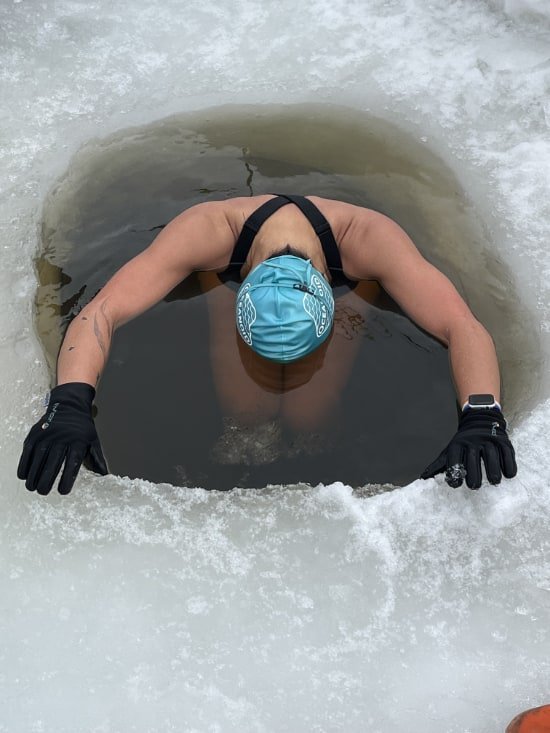
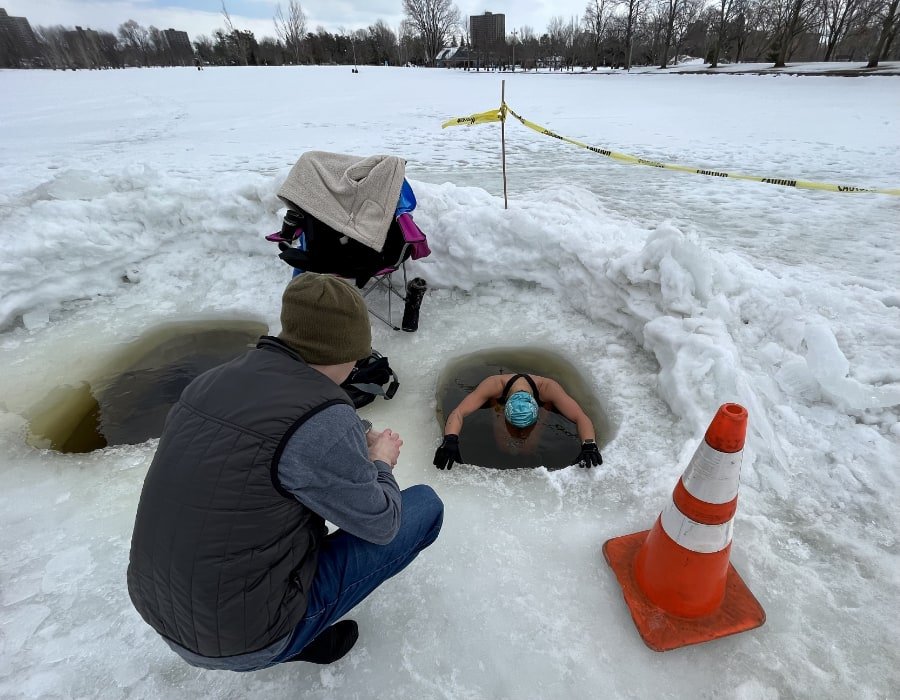
I lifted my finger to signal that I was fine when Chris let me know I was at the 30-second mark. I was sorely tempted to get out at that moment, but knew that I had it in me to do more, so I continued on. I had already decided I was not going to go for the full minute, my mind racing with thoughts of wanting to get out and get warm, but I decided to push myself a little and at least get myself to the 45-second mark. As soon as I did, I lifted my head, did my three hook breaths for recovery as I was trained to do, and immediately hoisted myself out of the water.
Recovering in the Wind
As soon as I pulled myself out, I felt the wind pelt my wet body. "Dear God it's cold!" I thought, as I went through my checklist, very quickly patting myself try and getting myself into my warm clothes. I took the assist from my safety to help me get my socks on, my body not quite as dry as it had been the last couple of times I had been out. I was just so keen to get covered against the horrible wind that was making the exit so unpleasant.
I let Chris take care of packing up all my stuff and immediately started into a light jog, trying to kick start my body's rewarming process. I realized it wasn't quite enough, and Chris jogged with me back to the car to get it opened and started so I could get out of the wind. Being so focused on trying to get out of the wind, I didn't manage to record my time to get to the after-drop after extraction, but I really didn't care at that point. It was a sobering reminder of how shore conditions can have a profound impact on cold water immersions even when the water temperature is the same.
Final Thoughts
After getting home, I noticed that I was feeling the cold for much longer after the shivering had stopped. I decided to take an infrared sauna followed by a shower to get myself warm. I typically spend 30-40 minutes in my sauna blanket, which usually ends with me covered in sweat. This time, I got in still wearing my fleece warm-up pants and jacket from the immersion, as well as my hat. I managed to doze off and woke to the sound of the beep as the sauna turned off, ending its cycle. I was still dry as a bone without even a trace of sweat. I was, however, feeling like my core had gotten back to normal.
I was mildly disappointed that I hadn't made it to 8 minutes, or managed a 1-minute breath hold in the cold, but I am happy that I didn't let that be a driver of poor decision-making. I had the presence of mind to listen to what my body was telling me, and allowed myself to push myself no further than I was ready for in that moment. Mindfulness and self-awareness are, in my mind, the most important parts of this practice. If you're interested in giving cold water immersions or swimming a try and live in the Vancouver area, check out my mentor Roberta Cenedese's cold water training sessions.
Now over to you. Have you attempted to do breath holds in extremely cold water? If so, what was your experience like? Please share your thoughts in the comments.

